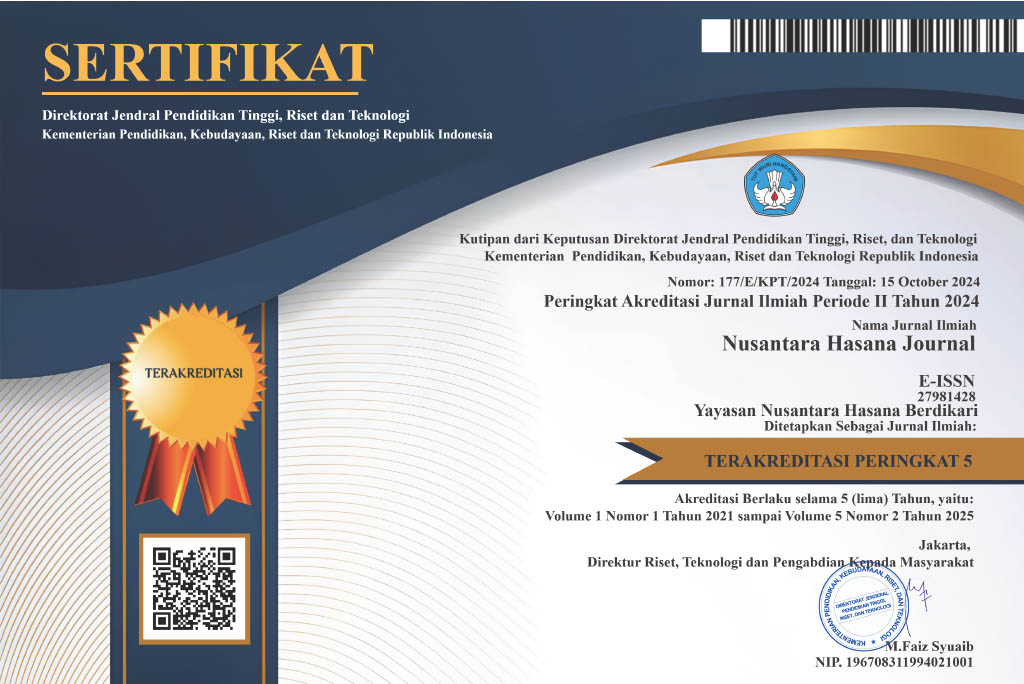ATYPICAL MICROGLANDULAR ADENOSIS MIMICKING INVASIVE TUBULAR CARCINOMA, A RARE CHALLENGING DIAGNOSIS
DOI:
https://doi.org/10.59003/nhj.v4i7.1297Keywords:
Atypical Microglandular Adenosis, Frozen Section, Immunohistochemistry, S100Abstract
Background: Microglandular adenosis (MGA) is a rare breast lesion that poses diagnostic challenges due to its resemblance to invasive carcinoma, particularly invasive tubular carcinoma (ITC). Atypical MGA is of clinical concern because of its potential for malignant transformation. Accurate diagnosis relies on histopathological examination and immunohistochemical (IHC) analysis. Case Presentation: A 34-year-old woman presented with a painless lump in her left breast. Intraoperative frozen section analysis revealed small glandular structures with histological features mimicking ITC. Definitive diagnosis required further evaluation. Immunohistochemical analysis demonstrated S100 positivity, consistent with glandular differentiation, and negative p63 staining, indicating the absence of a myoepithelial layer. These findings, in the absence of definitive stromal invasion, supported a diagnosis of atypical MGA. Complete surgical excision was performed to ensure negative margins and exclude associated malignancy. Discussion: This case highlights the diagnostic complexity of atypical MGA, particularly in young patients. Frozen section analysis alone often fails to distinguish MGA from invasive carcinoma due to overlapping histological features. IHC markers, such as S100 and p63, are critical for differentiation. S100 positivity confirms glandular origin, while p63 negativity indicates the lack of a myoepithelial layer, distinguishing MGA from benign proliferative lesions. Accurate diagnosis is essential to avoid overtreatment, such as unnecessary chemotherapy or radical surgery, while ensuring appropriate management to mitigate malignant potential. Conclusion: This report underscores the importance of combining frozen section and IHC findings for rare breast lesions like atypical MGA. Increased awareness and careful evaluation are essential to achieve timely and precise diagnosis, enabling optimal surgical management and long-term outcomes.
Downloads
References
Kumar N, Prasad J. Epidemiology of benign breast lumps, is it changing: a prospective study. Int Surg J. 2019;6(2):465.
Vaid P, Kapoor B, Kapoor M, B Kapoor B, Kapoor S. Epidemiology of benign breast diseases in women. Panacea J Med Sci. 2020;10(3):222–6.
Hamdy O, Elzeiny A, German S, Group H, Saleh GA, Hassan A. Case Report Microglandular adenosis of the breast : A case report and a highlight on main diagnosis and management aspects. December 2020.
Chavarria H, Hacking S, Jin C, Kataria N, Glodan F. Human Pathology : Case Reports Triple negative metaplastic breast carcinoma presenting in the background of atypical microglandular adenosis with candidacy for atezolizumab immunotherapy. July 2020.
Huong NT, Hue TT, Hung ND, Duc NM. Ductal carcinoma in situ arises from microglandular adenosis and atypical microglandular adenosis in a young woman. J Clin Imaging Sci. 2023;13(15):13–6.
Rosai and Ackerman’s. Surgical Pathology: Breast. In: Houston M, editor. Tenth Edit. London New York: Elsevier; 2011. p. 1671–81.
Hoda, Syed A. Brogi, Edi. Koerner CF. Rosen’s: Breast Pathology. Fourth Edi. Rosen’s Breast Pathology: Fourth Edition. New York: Wolter; 2015. 183–205 p.
Dilani Lokuhetty VA white. Microglandular adenosis: Breast Tumours in WHO Classification of Tumours. In: Dilani Lokuhetty, Valerie A. White RW and JAC, editor. 5 th Editi. France: International Agency for Research on Cancer (IARC); 2019. p. 22–122.
Love B, Flores C, Chibuzor CA, Johnson M, Young MR, Morris S, et al. Atypical Microglandular Adenosis of the Breast , a Non-Obligate Precursor to Breast Invasive Carcinoma : Case Report and Review of the Literature Abstract : Introduction : Discussion :
Kravtsov O, Jorns JM. Microglandular adenosis and associated invasive carcinoma. Arch Pathol Lab Med. 2020;144(1):42–6.
Foschini MP, Eusebi V. Microglandular adenosis of the breast: a deceptive and still mysterious benign lesion. Hum Pathol [Internet]. 2018;82:1–9. Available from: https://doi.org/10.1016/j.humpath.2018.06.025
Ozturk E, Yucesoy C, Onal B, Han U, Seker G, Hekimoglu B. Mammographic and ultrasonographic findings of different breast adenosis lesions. J Belgian Soc Radiol. 2015;99(1):21–7.
Sapino A, Kulka J. Breast Pathology. Turin: Italia: Springer; 2019.
Sahasrabudhe N, Brelsford K, Kumar S, Mene A. Atypical microglandular adenosis presenting as a breast lump. Diagnostic Histopathol [Internet]. 2011;17(1):36–9. Available from: http://dx.doi.org/10.1016/j.mpdhp.2010.10.002
Kim DJ, Sun WY, Ryu DH, Park JW, Yun HY, Choi JW, et al. Microglandular adenosis. J Breast Cancer. 2011;14(1):72–5.
Downloads
Published
How to Cite
Issue
Section
License
Copyright (c) 2024 Hera Novianti

This work is licensed under a Creative Commons Attribution-NonCommercial-ShareAlike 4.0 International License.
NHJ is licensed under a Creative Commons Attribution-NonCommercial-ShareAlike 4.0 International License.
Articles in this journal are Open Access articles published under the Creative Commons CC BY-NC-SA License This license permits use, distribution and reproduction in any medium for non-commercial purposes only, provided the original work and source is properly cited.
Any derivative of the original must be distributed under the same license as the original.
























